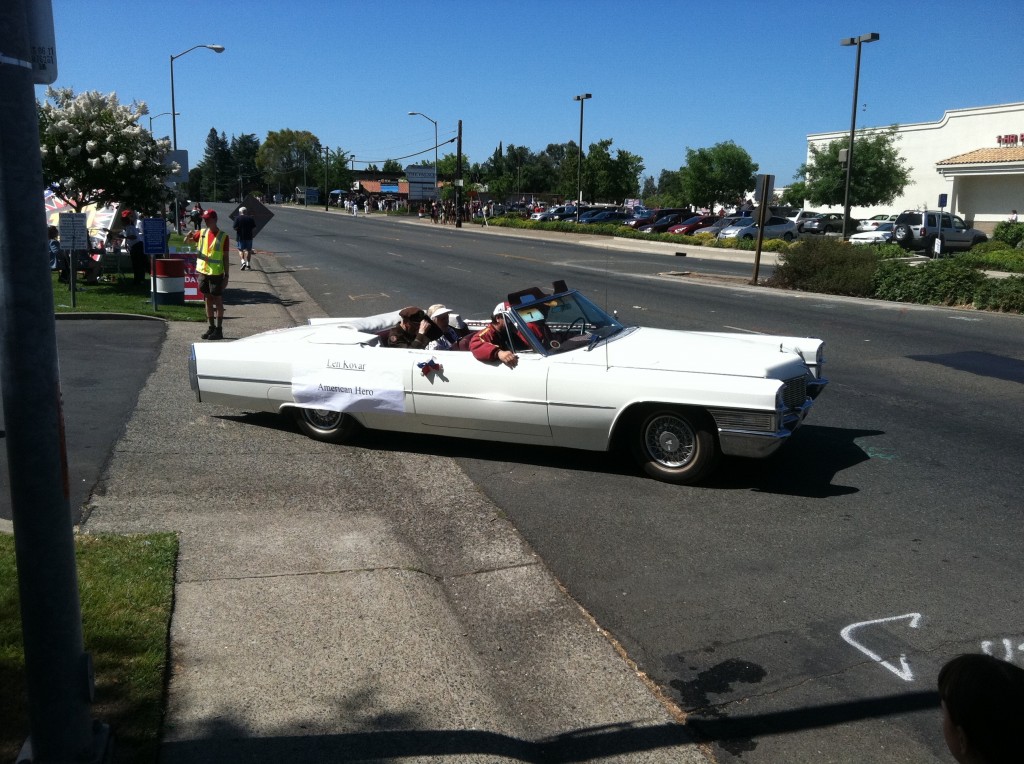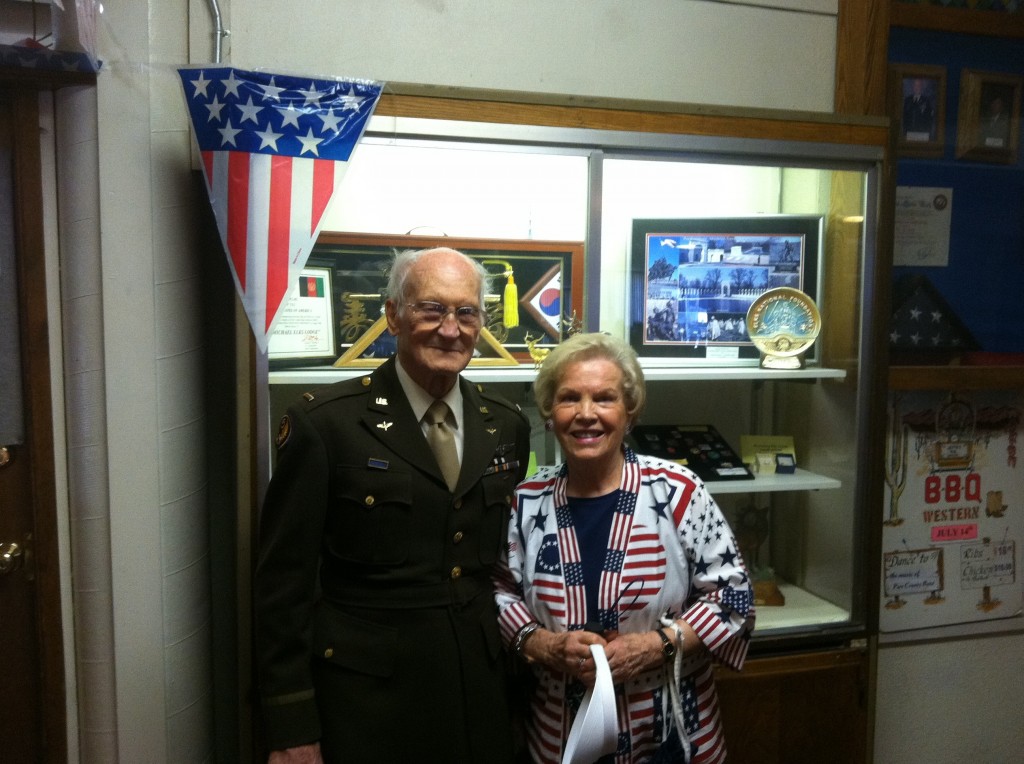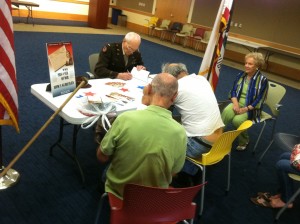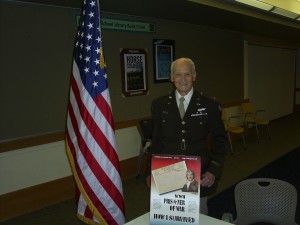Len Kovar: Revealing Character 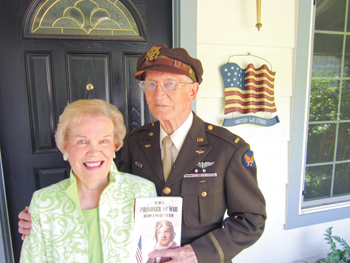
By Julie Parker
Posted: 7/19/2012
Len and Lorraine Kovar have been married for over 60 years. “Life gets richer, and victories occur, even amid tragedy.” Photo by Julie Parker.
http://www.carmichaeltimes.com/headline-news/LenKovar.html
CARMICHAEL – Adversity doesn’t build character, it reveals it. As a POW during World War II, Second Lt. Len Kovar came to the aide of fellow POWs during two death marches, even though he was personally struggling to survive. The oldest of four, Kovar was born and raised in Minneapolis, where winters were brutal – sometimes 40 degrees below. Once, during his early morning paper route, he would have frozen to death if the milkman hadn’t spotted him lying in the snow. In high school, he was one of 17 boys who called themselves the “Blue Devils.” They played ball, and sang. Those were fun years. Kovar, failing college, decided to sign up for the service. “I joined the Army Air Corps, because as a little kid, I dreamed of being another fighter pilot like WWI German Ace, Baron Von Richthofen [the “Red Baron”]. We made models of his plane and blew them up.” Instead, he became a bombardier-navigator for the 727th Squadron of the 451st Bomb Group of the 15th Air Force. During his eleventh combat mission from Loggia, Italy to Vienna, Austria, his B-24 plane–named “Con Job”–(along with half his squadron) was shot down by German Folke Wolf 190 fighters over Hungary./ In his book, “WWII Prisoner of War: How I Survived” (available at amazon.com), Kovar shares a vivid, detailed account of being captured by hostile Hungarians, and his subsequent nine month stint as a POW in multiple German stalags (prison camps for airmen). The first camp was Stalag Luft 3, which was highlighted in the movie “The Great Escape.” Photographs taken by a fellow POW with a secret camera provide glimpses into the stalag environments, and two death marches during one of the worst European winters in recorded history. (His childhood winters paled by comparison. “I began to panic and realized that keeping control of my mental state was my new battleground…. … I laid down on my dirty straw tic with its writhing life forms … … if there is a pit in the abyss of hell that is the absolute epitome of misery, this experience would be a candidate for the bottom rung.” He took a vow with God that if he was allowed to live, he would join the ministry after the war. (He kept that promise.) In Nuremberg, the POWs experienced the terrifying “carpet bombing” by both Americans and the British. Finally, on April 13, 1945, in Stalag 7A at Moosberg, he witnessed the lowering of the Nazi flag, and in its place, the American flag. “… with tears running down my cheeks, I stood at attention and saluted – my flag.” General George S. Patton’s army liberated the camp, and Kovar was on the first boat of prisoners to return to the States. “I remember seeing the Statue of Liberty, and feeling very proud.” In a seriously overcrowded boxcar traveling to Stalag III, Kovar had made a pact with himself to complete college. He made good on that pact, earning a B.A. in Economics at Macalester College in St. Paul. “One day in the college library, I saw this stunning blonde stamping books at the desk and I said, ‘That’s the one.’ I carefully selected a book to check out, we talked, went out for a Coke, and took it from there.” He and Lorraine have been married for over 60 years, enjoying their three children, seven grandchildren, and two great-grandchildren. Kovar’s ministry has taken them to Missouri, Montana, Massachusetts, and New Zealand. Unsurprisingly, the war left him with “a lot of emotional memories and upsets.” Wishing to help others experiencing psychological scarring, he became a licensed marriage, family, and child counselor. He was with the National Ski Patrol for several years, and took youth groups on backpacking trips in Montana and California. “In Montana, my favorite place was Spanish Peaks.” His two sons founded the successful Kovar Martial Arts. “When my boys were working with karate 24-hours-a-day, they were in a world I didn’t know anything about. So, I started karate around age 50, and ultimately got my third degree black belt.” To those facing challenges, Kovar offers this sage advice: “Recognize that we are all involved in a purposeful adventure. All of the issues that we face become blessings. They teach us something, and give something in return. If you pursue life in a loving, intelligent way, somehow things work out. Life gets richer, and victories occur, even amid tragedy.”



